





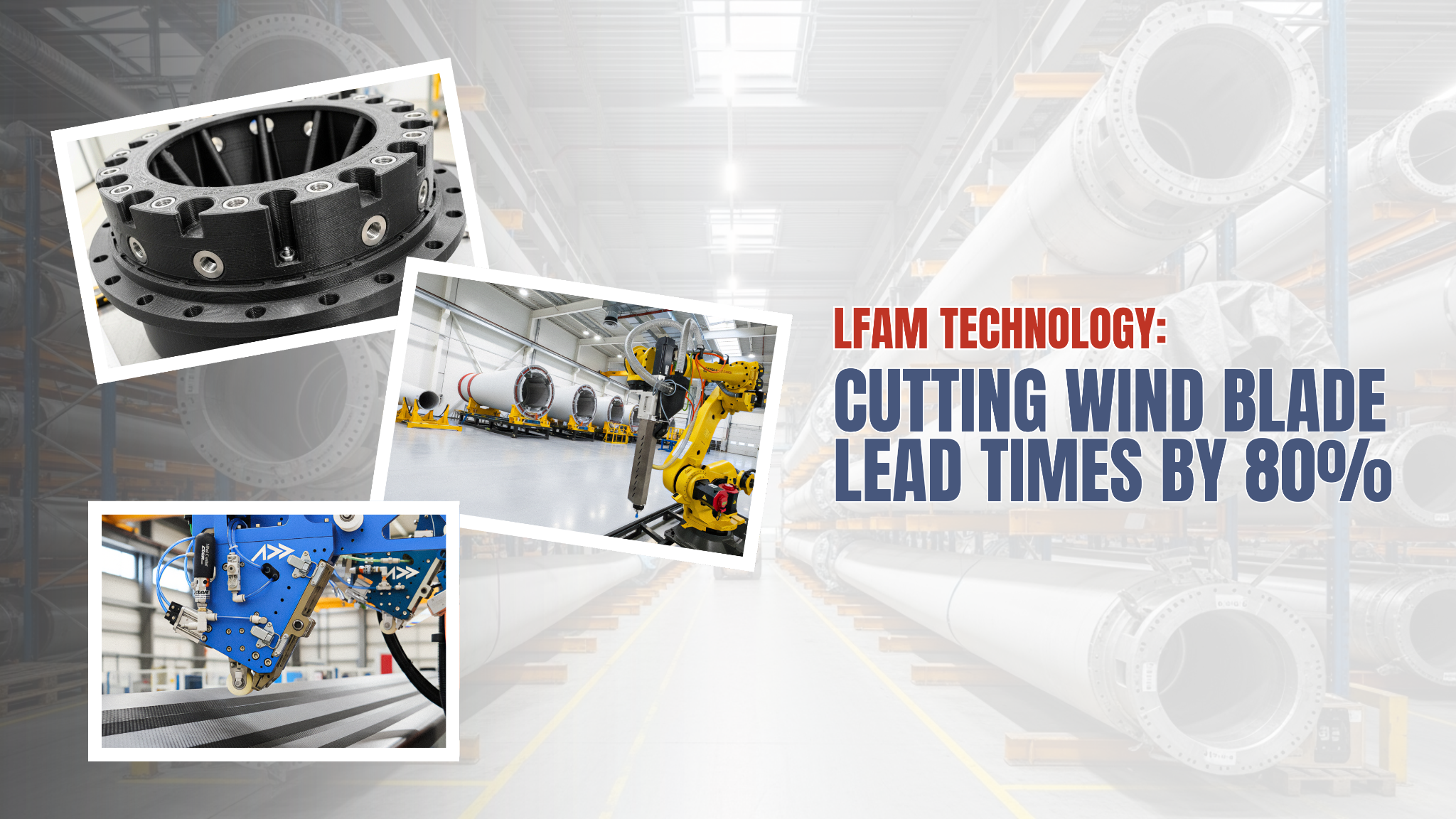

The wind energy sector faces a critical manufacturing bottleneck. Traditional wind turbine blade production, especially for smaller 5-7 meter blades, relies on expensive aluminum or steel molds that take months to produce and cost hundreds of thousands of dollars. Even minor design tweaks trigger massive delays and expenses, forcing manufacturers to sometimes proceed with defective molds and fix issues in post-processing. These massive single-piece molds occupy significant floor space and present logistical nightmares for transportation and storage. For an industry that thrives on innovation and rapid deployment, these constraints have become increasingly untenable.
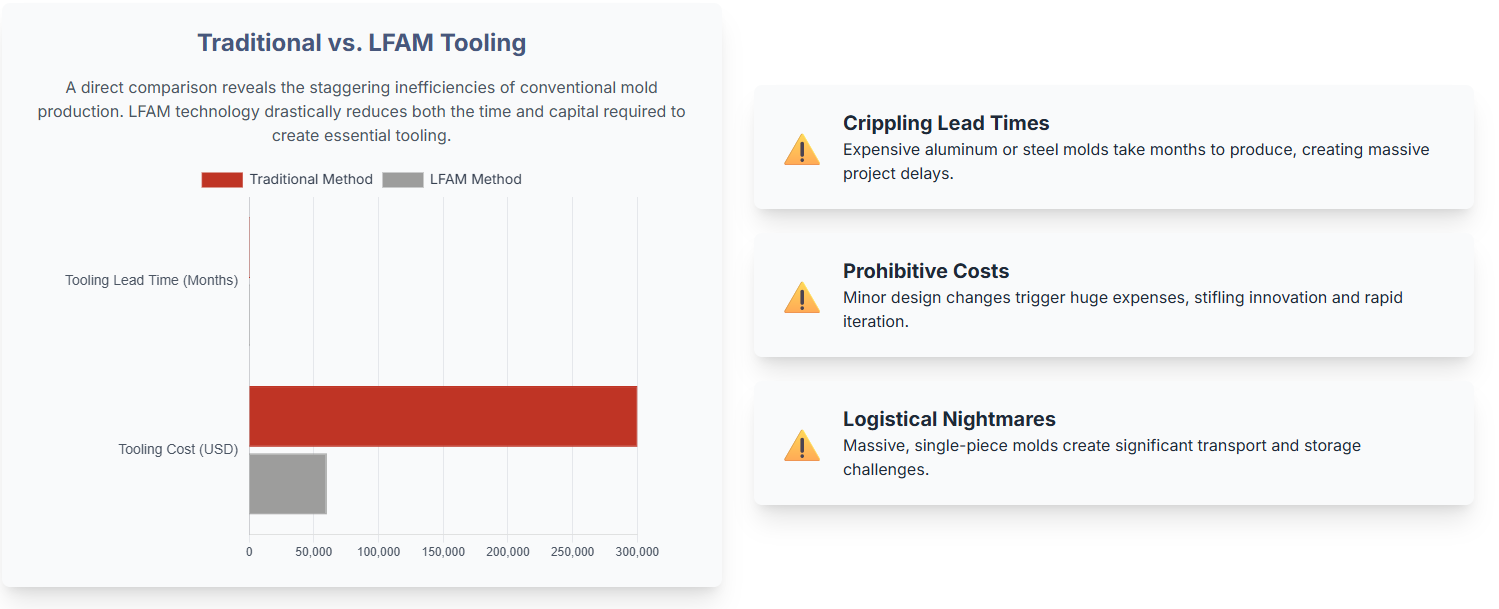
Large Format Additive Manufacturing (LFAM) with SCF3D technology is rewriting the rules of mold production. Instead of months, molds can now be produced in days – an 80% reduction in lead time. By bringing production in-house, manufacturers eliminate complex supplier logistics and gain unprecedented control over their production timeline.
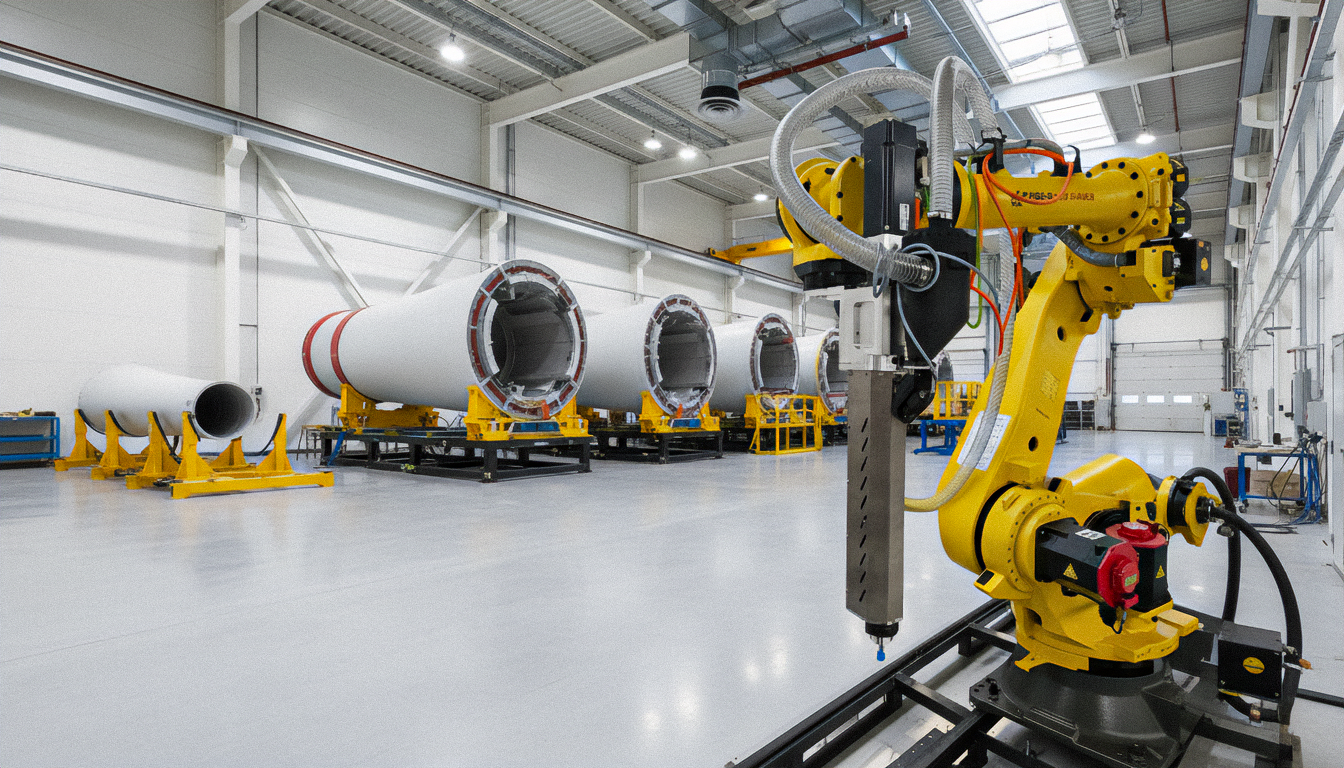
The advantages extend beyond speed. 3D printed molds offer superior thermal stability compared to traditional materials, with carbon composites maintaining accuracy at temperatures that would compromise aluminum or steel molds. These molds can be produced in modular sections rather than single massive pieces, simplifying logistics while maintaining precision. Perhaps most importantly, the chopped carbon fiber material can be recycled multiple times within the same facility, creating a sustainable production cycle that was impossible with traditional tooling.
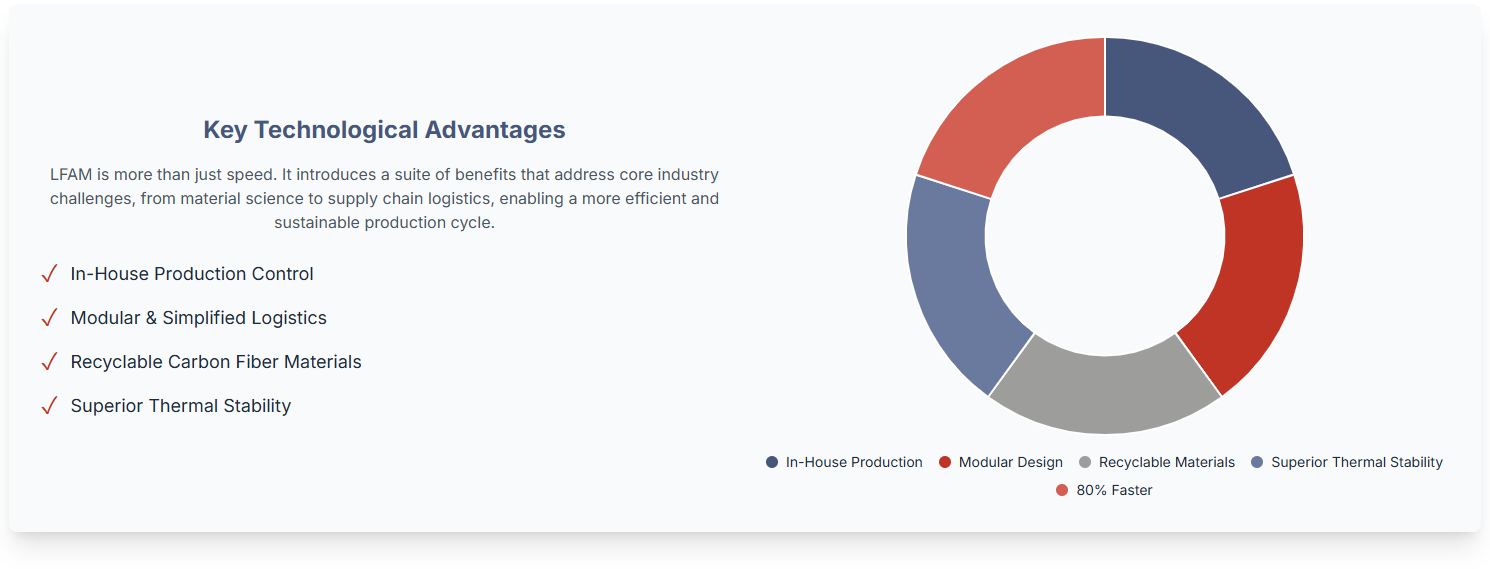
While directly 3D printing entire wind blades presents weight and surface finish challenges, the real breakthrough comes from combining technologies. The optimal approach uses LFAM to create the mold, followed by Automated Fiber Placement (AFP-XS) from AddComposites to lay the outer shell with precise fiber orientations, and finally SCF3D printing for internal structures.

This hybrid methodology solves multiple industry challenges simultaneously. Unlike traditional honeycomb cores made from Nomex or metal, 3D printed internal structures use the same composite material as the skin, ensuring uniform properties throughout the blade. Engineers can now incorporate biomimetic and lattice structures inspired by nature – geometries that would be impossible with traditional manufacturing but excel at distributing loads while minimizing weight.

LFAM technology liberates engineers from the constraints that have limited wind blade design for decades. The multi-directional layup capability addresses one of the industry's persistent challenges: achieving specific fiber angles required for optimal aerodynamics. With continuous fiber reinforcement placed precisely where needed, designers can optimize blade performance in ways previously impossible.
This flexibility transforms the R&D process. Engineers can rapidly iterate designs, test novel aerodynamic profiles, and experiment with load-bearing structures without the prohibitive costs and delays of traditional tooling. Complex geometries that enhance performance – from variable thickness profiles to integrated structural features – can now be implemented cost-effectively even in small production runs.

For smaller wind turbines, LFAM opens specific high-value applications. The blade root section, which connects to the hub, is ideal for 3D printing – its central location makes additional weight less problematic, while the ability to easily incorporate mounting points adds practical value. Small-scale prototypes for wind tunnel testing can be produced rapidly, enabling aerodynamic validation before committing to full-scale production.
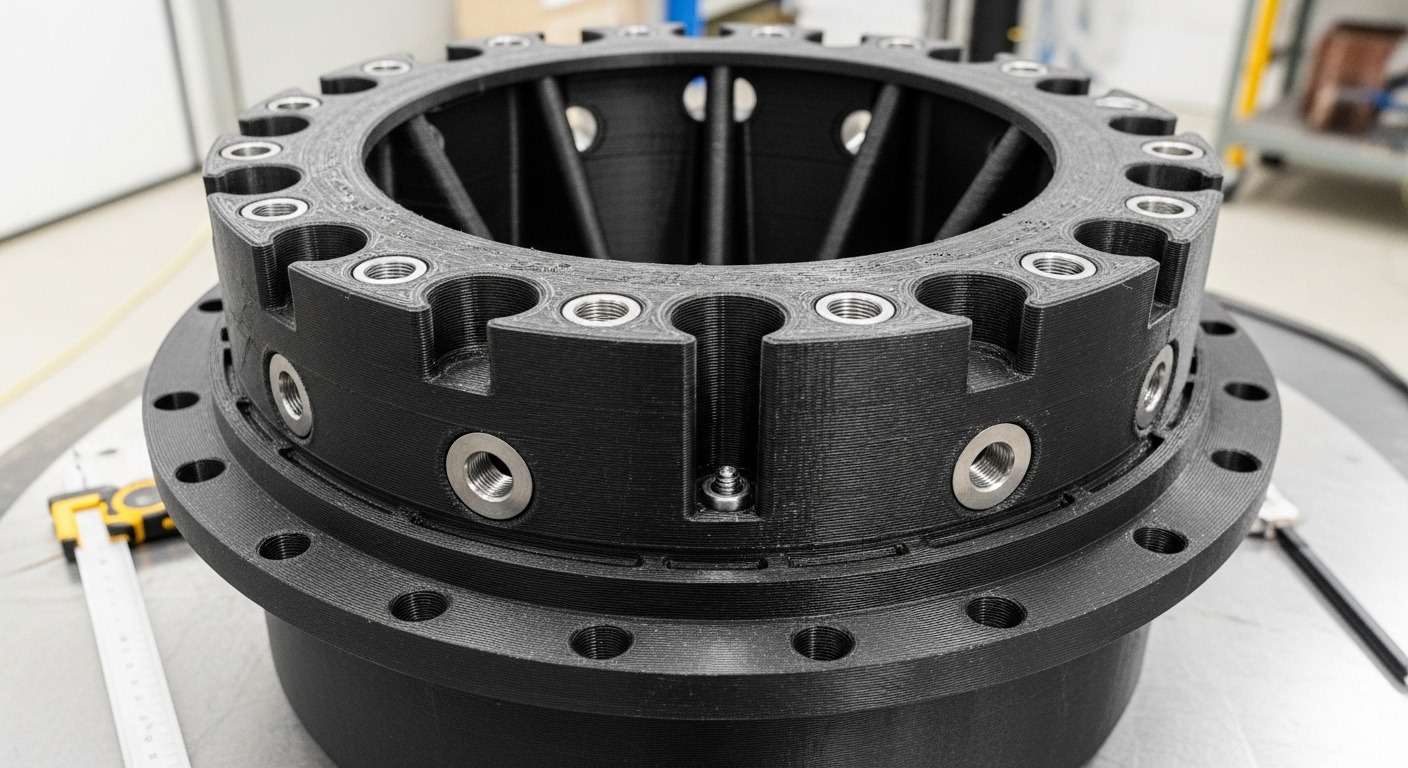
The technology particularly shines in custom and low-volume applications where traditional tooling costs cannot be justified. Remote installations, specialized urban turbines, or research projects can now access custom blade designs that would have been economically impossible with conventional manufacturing. The ability to produce replacement parts on-demand also reduces inventory costs and improves turbine uptime.

Ready to revolutionize your wind turbine blade production? AddComposites provides the complete LFAM ecosystem – from SCF3D printing to AFP-XS systems – reducing tooling costs by up to 80% and lead times from months to days.
Our expert team guides you through implementation, training, and continuous innovation partnership. Don't let traditional constraints limit your wind energy potential.
Contact AddComposites today to schedule a consultation and see live demonstrations of our technology creating next-generation wind turbine components. Join the manufacturers leading the renewable energy revolution.
